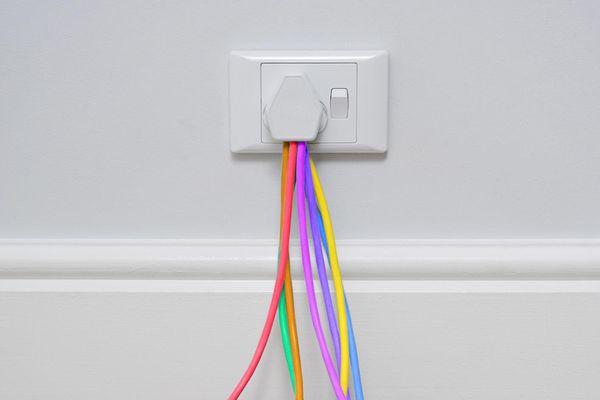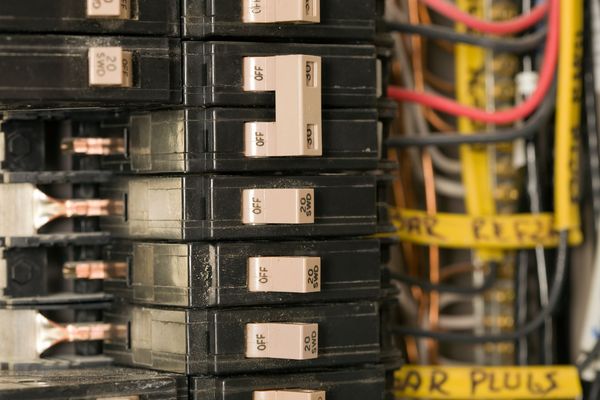Electrical wiring side, type and installation
The do-it-yourselfer sometimes runs into electrical mishaps around the home. Sometimes you may have to repair an electrical connection or you may have to wire a replacement. Either way, it often requires that you deal with the electrical wiring. These tutorials will help you through the process of dealing with all things electrical with ease.
01
Direct Burial Cable
Brightly coloured wires comming out of a plug.
Some cables are meant to be run indoors, while others are meant for weathered areas and underground like direct burial cable. Direct burial cable can be installed underground without being installed in conduit. The utility company often runs underground services using this method.
02
Common Types Of Electrical Wiring Used In A Home
Your home is wired with different types of wire. Each has its specific use to accommodate the load and conditions it is exposed to. Let’s examine what each type is and how it is used in the home’s electrical system.
03
What Size Electrical Wire Do I Need?
In order to install any electrical wire installation, the proper wire size for the application is needed. But how do you know what size wire to use? The wire is sized by the American Wire Gauge (AWG) system. Your installation of conductors will depend on a few factors. The gauge of the wire, wire capacity, and what the wire will feed should all be considered.
04
Electrical Wire Color Coding
Electrical wires have markings stamped or printed on the outside sheath of the cable. These markings tell what type and size of wire that you have. But looking deeper, the color of the wires inside of the sheath, like in type NM cable, will reveal that different color wires serve different purposes.
05
What Do The Letters On Electrical Wire Mean?
Understanding electrical wire lettering will help you decide which type wire is best for the installation that you are using. There are many different types of insulation used for residential use. Some of the most commonly used are THHN, THWN, THW and XHHN.
06
How To Wire an Electrical Panel
The electric panel is the power distribution point of the home. All of you electrical load connections happen here to feed the devices throughout the home. Find out how to make these connections to circuit breakers in this article.
07
How To Strip Electrical Wire
Before you can actually strip electrical wires, you'll need one of two tools to remove the insulation from the copper wire. The first tool is a wire stripping tool. It has cutoff blades and many formed stripping holes (notches) on each half of the tool. These holes have the different sized wires listed for you. For instance, if you're stripping #12 wire, you'll use the #12 hole. It will cut the insulation off of the wire without damaging the copper wire.
08
How To Wire Electrical Disconnects
Electrical disconnects are generally mounted below the electric meter on the side of your home or on the utility company's power pole. Their purpose is to disconnect power to the home from the outside of the home. A great example would be in the event of a fire within the home. Learn how to wire this disconnect.
Continue to 9 of 10 below.
09
Electrical Wire And Cable Conductors Types
Electrical wire is used to carry electric current from the power source to the end user device, like an outlet or light. This wire is really a conductor but is referred to as wire in most instances. There are three different styles of wire. Bare wire is just what the name states, non-insulated. Insulated solid wire it a solid piece of wire that is coated and encased in a plastic coating. The last is insulated stranded wire. This has many smaller sized strands of copper and is also wrapped in a protective plastic coating. Type NM cable, as it is often referred to, is sold in precut lengths like 50', 100', 250', and 1,000' spools.
10
Maximum Number Of Electrical Wires Allowed In Conduit
Electrical conduit, whether it be metal (EMT), plastic (PVC), or flexible conduit, each has their own maximum number of electrical wires allowed in the conduit. Their fill capacities are different, even though they may be the same size conduit.




Comments
Post a Comment